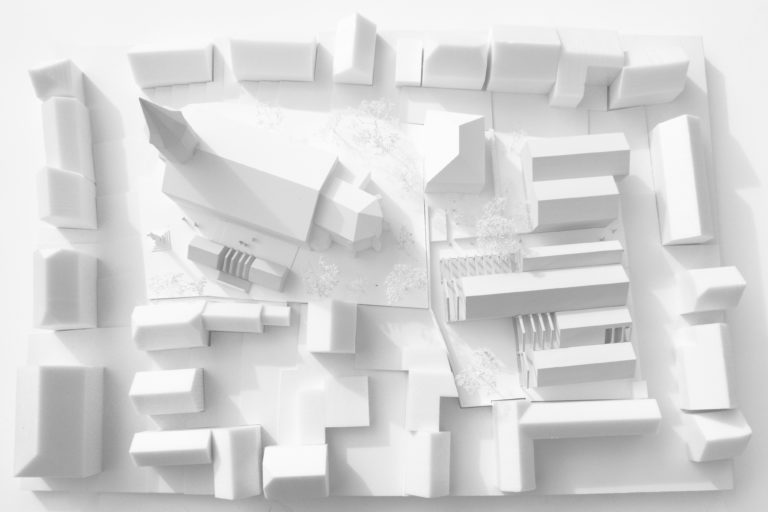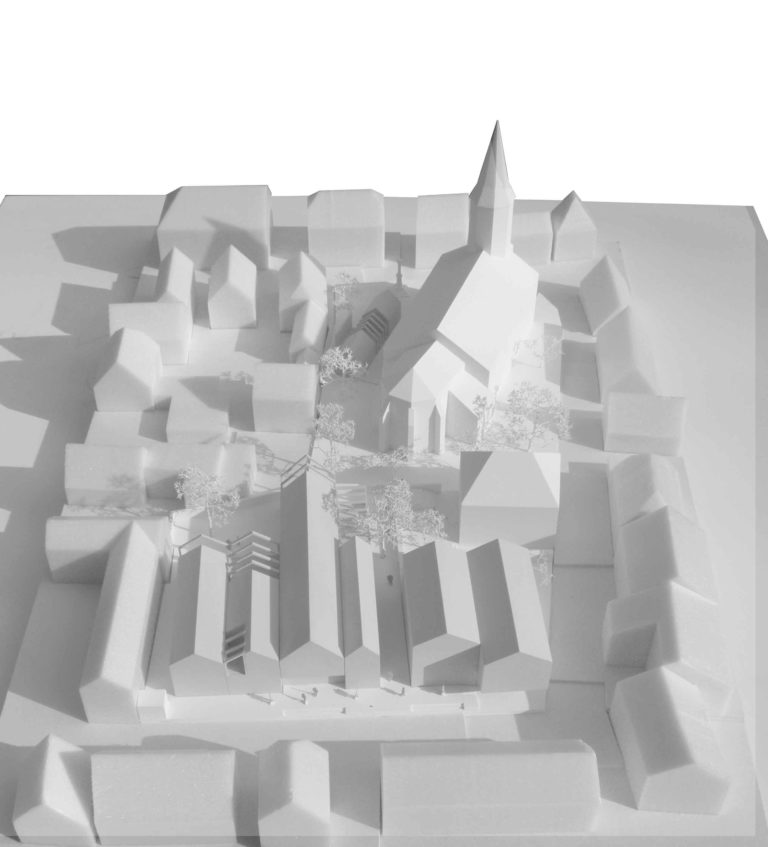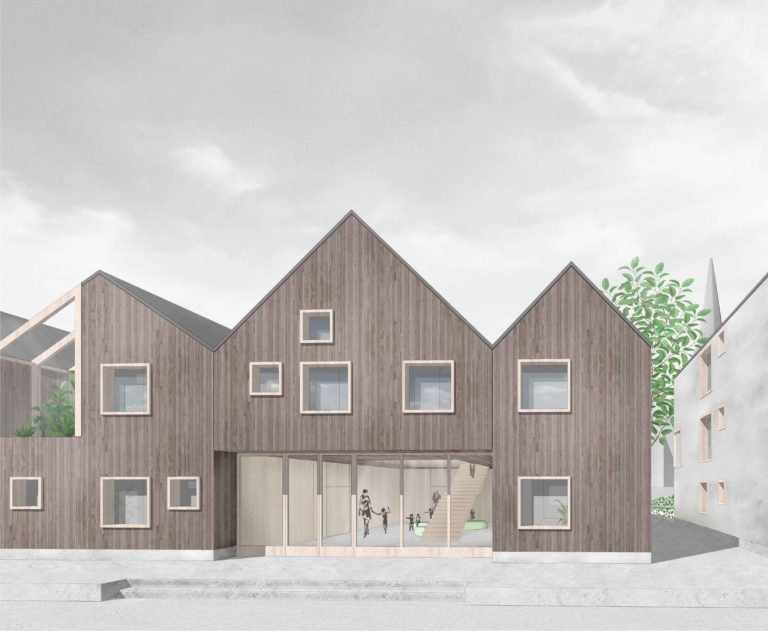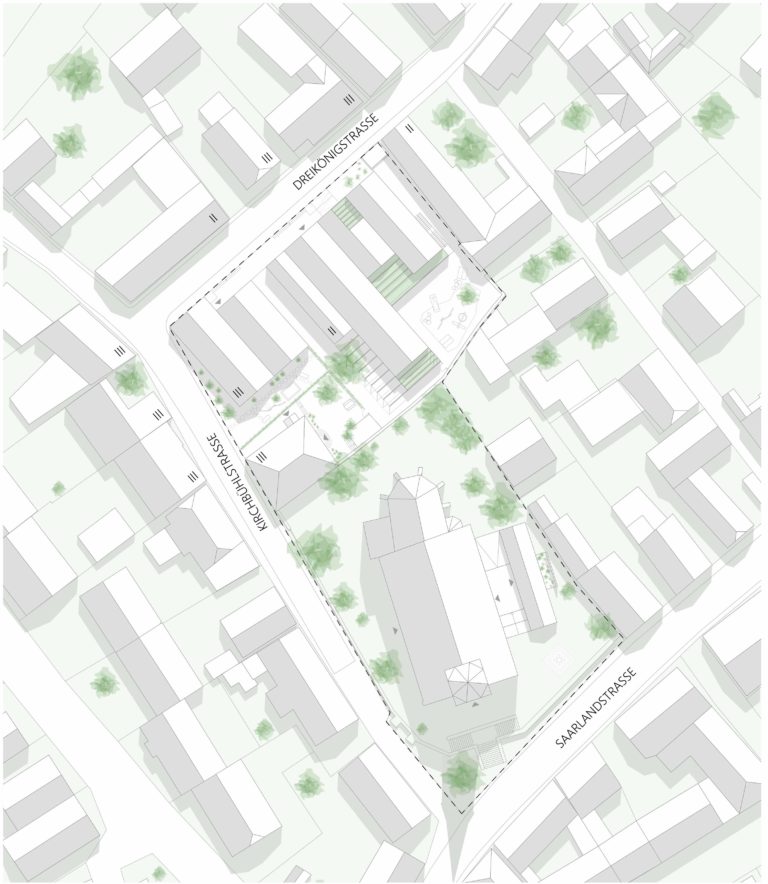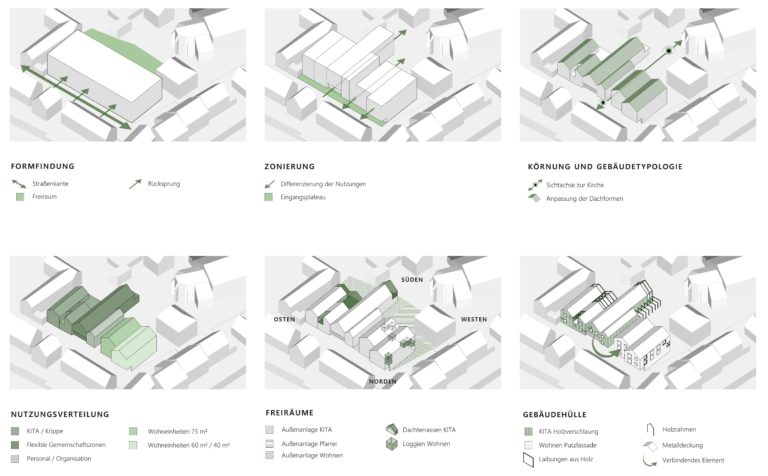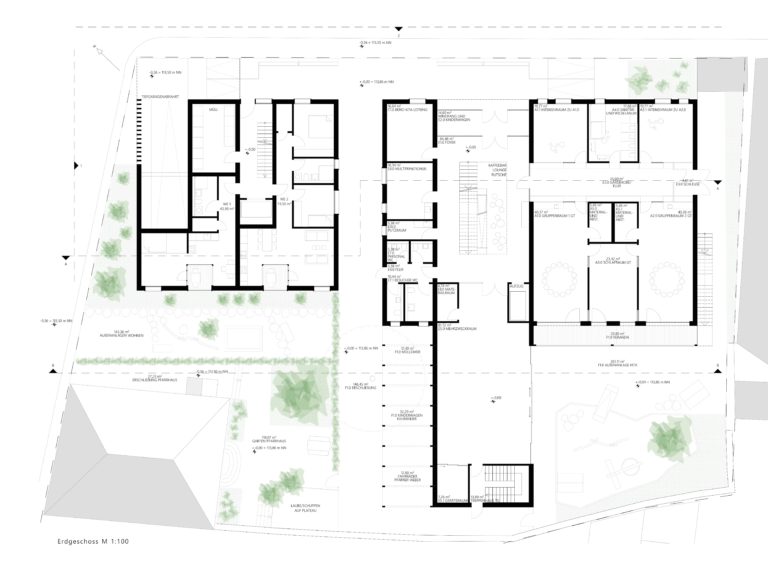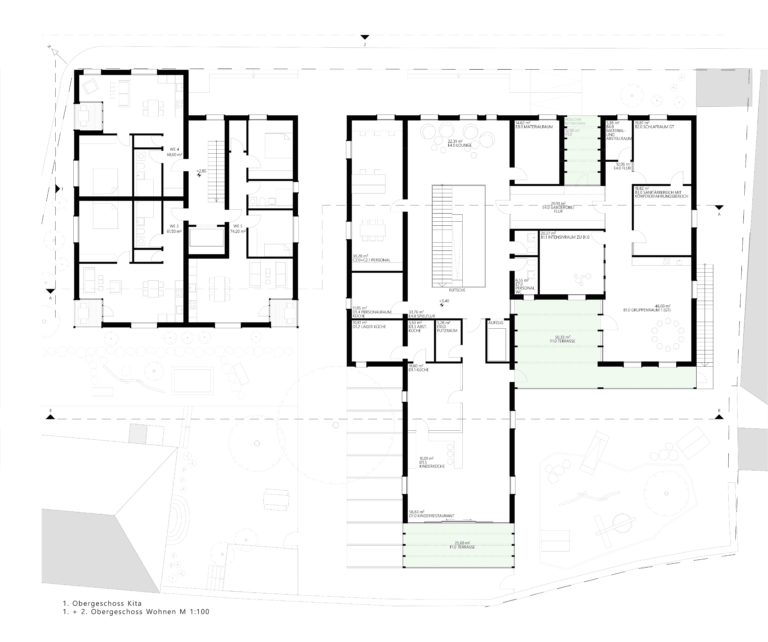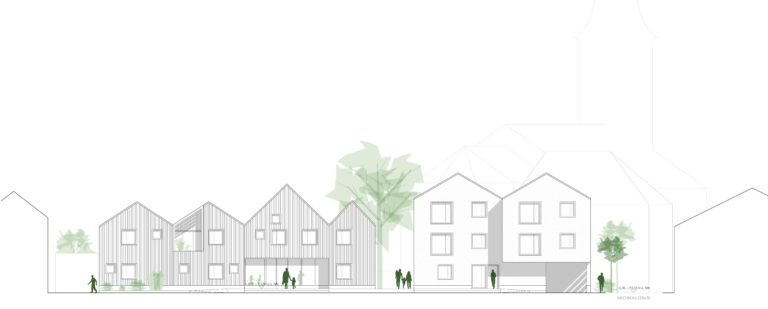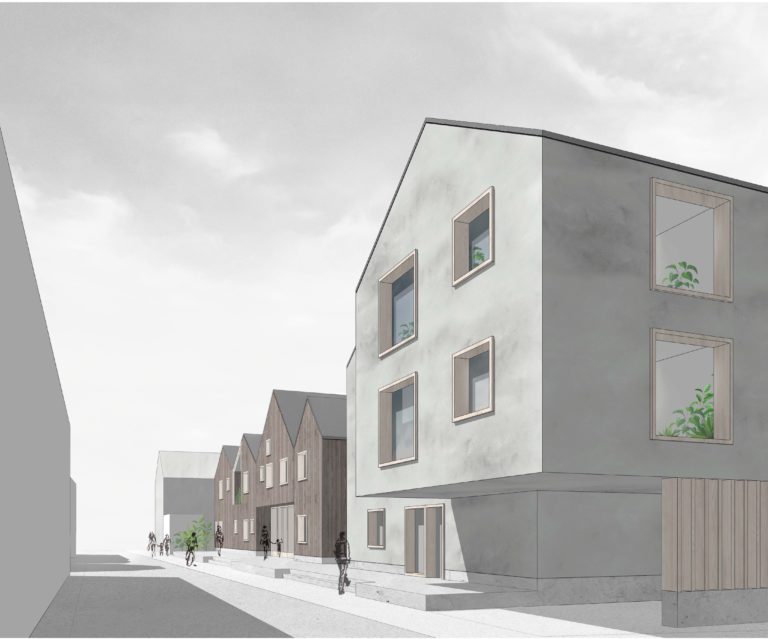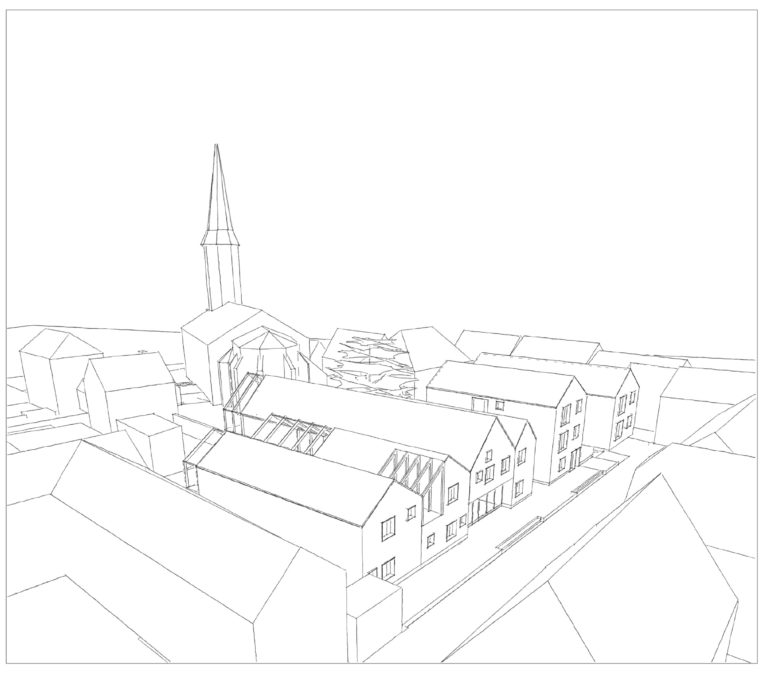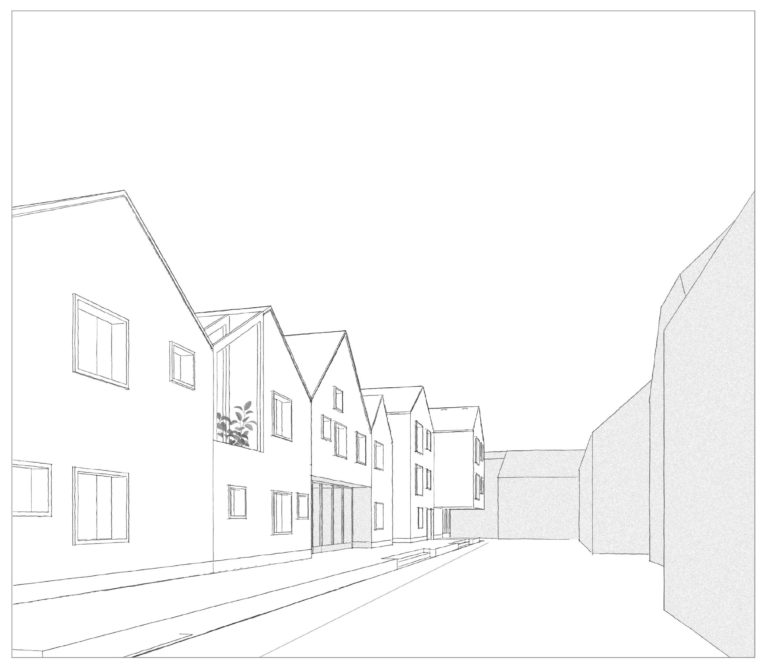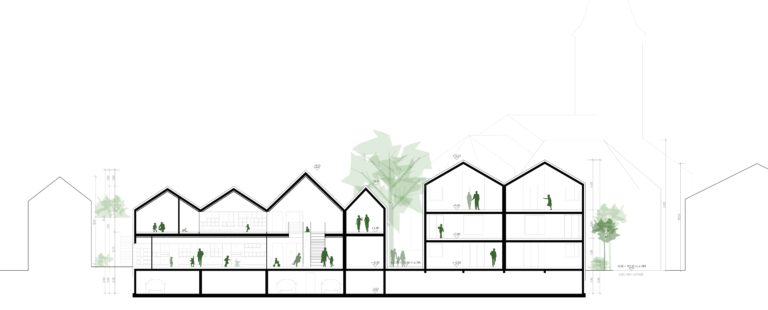Complexity and conciseness
This is how you could describe our work, because despite the complexity and diversity of the requirements for urban planning, spatial conception, design and open space, it seeks a recognisable, concise architectural approach.
We don't want a large form that competes with the church, but rather to remain small-scale and yet the work should not disintegrate into fragments. A uniform architectural language should tie the individual objects together like a common thread and lend the whole a concise appearance.
For example, the façade of the planned timber kindergarten is made of acetylated wood. This can be found in the solid, plastered residential building as a striking window reveal and loggia cladding.
The urban design incorporates small-scale building typologies and roof shapes typical of the area. It allows an unobstructed view of the church via an internal alley, creates a high-quality, wide street space and creates functioning spatial units consisting of a day-care centre, residential building and rectory or church and sacred space. Each new building functions and stands formally on its own, but is held together by the architectural language and forms an attractive ensemble with the church and rectory.
An important microclimatic and visual concern is to preserve the existing large trees. The street space, which is currently viewed critically, and the sunlight on the buildings opposite will be sustainably improved by the planning.
KITA
The KITA is designed in such a way that changing educational concepts can also be catered for.
The intensive rooms are therefore not only accessible from the group room. A possible external partial utilisation of the daycare centre would also be conceivable. The multi-purpose room and the upper dining room can be used separately via the foyer, as the group areas can be closed off separately. This could be helpful for an expanding Sunday children's work of the church community or for the development of a small family advice centre or future uses.
In a rapidly developing and differentiated society, we do not believe that a use that is permanently tailored to one function is in keeping with the times.
The toddler area is protected on the upper floor, as the toddlers do not necessarily need direct access to the garden. This is provided via an external and emergency staircase or the lift.
Living
The residential building is located opposite the vicarage on the corner of the plot and thus utilises the good sunlight and the view. In terms of form and dimensions, the residential building blends in
the context. The flats (social housing) are compact, functional and well lit.
Rectory
The vicarage will have a private and visually protected entrance and outdoor area.
Residents can access the underground car park discreetly via their private area, past their own bicycle parking space via the stairs at the rear entrance to the KITA.
Church rooms/sacred room (pavilion) next to the church
This is based on the design language of the other new buildings, but is formally restrained and consists of a monolithic exposed concrete structure with a central group room that overlooks a small meditative garden. This room would also be suitable as a quiet room for pastoral discussions or other sacred matters.
Building construction
The KITA is a complete timber construction. The façade is made of acetylated and therefore extremely durable wood.
The residential building is a solid construction made of prefabricated concrete slabs and 42 cm thick porous brickwork. For reasons of sustainability, no composite building materials such as ETICS are used. A metal roof covering is proposed due to the shape of the roof and the resulting valleys. This covering also allows for the formally and functionally acceptable integration of monolithic solar cells (grey).
Energy concept
The energy concept and therefore also the level of the efficiency houses (KFW 40 or 55) must be clarified at a later stage if it is to be truly sustainable. In Karlsruhe in particular, there are many conceivable options which, in our experience, can only be evaluated responsibly after a reliable simulation.
The aim is to integrate photovoltaics into the energy concept in a formally and technically successful way with a high level of self-consumption.

